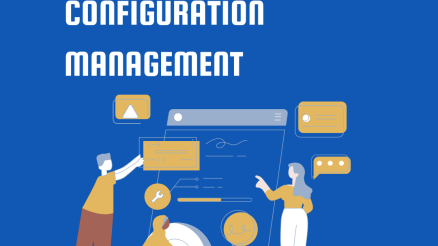Change is a constant feature of manufacturing industry.
Whether it’s the implementation of new technologies, restructuring of the production line, or adapting to shifting market demands, change is inevitable in the manufacturing world.
And while change can bring new opportunities and improvements, it can also be disruptive and challenging to navigate.
That’s why having a well-planned and executed change management process is essential for success in the manufacturing industry.
In this blog post, we will delve into the importance of change management in manufacturing and guide you through the process of effectively managing change in your organization. And also explain manufacturing change management examples.
The purpose of this blog post is to educate and inform individuals and organizations in the manufacturing industry about the importance of change management and to provide them with a comprehensive guide on how to effectively manage change in their operations.
Let’s start with basic concepts of change management and its relevance in manufacturing industries.
What is Change Management?
Change management is a systematic approach to dealing with the transition or transformation of an organization, process, or system from its current state to a desired state. It involves planning, executing, and managing change in a structured and controlled manner to minimize the disruption and negative impact on the organization, its employees, and its stakeholders.
Change management aims to ensure the effective and efficient implementation of change initiatives, while balancing the need for innovation and progress with the need to maintain stability and minimize risk.
What is Manufacturing Industry?
The manufacturing industry involves the production of goods using raw materials, components, or semi-finished products through a combination of manual labor and machinery. The manufacturing industry is a critical sector of the economy, as it is responsible for producing the goods that drive growth and development. The sector encompasses a wide range of industries, including consumer goods, electronics, machinery, chemicals, and aerospace.
Manufacturing processes can be automated or semi-automated, and they often involve the use of specialized skills and knowledge to ensure the production of quality products. The industry is constantly evolving, with advances in technology driving changes in the production process, such as the adoption of automation, robotics, and digital technologies.
Why change management is important in the manufacturing industry?
Change management is especially important in the manufacturing industry for several reasons:
Competition
The manufacturing industry is highly competitive, and companies need to constantly adapt to changing market demands, new technologies, and shifting consumer preferences in order to remain competitive. Change management enables organizations to identify and respond to these changes in a structured and controlled manner, which helps them stay ahead of the curve.
Process improvement
The manufacturing industry is constantly seeking ways to improve efficiency, reduce costs, and increase productivity. Change management provides a framework for implementing process improvements and ensures that they are executed in a controlled and effective manner.
Employee engagement
Employees play a critical role in the success of change initiatives in the manufacturing industry. Change management provides a mechanism for involving employees in the change process and managing their resistance to change, which helps to minimize the impact on morale and productivity.
Risk management
Change can bring about significant risk to the manufacturing industry, including operational disruptions, supply chain interruptions, and decreased productivity. Change management helps to mitigate these risks by providing a structured and controlled approach to managing change, reducing the likelihood of negative outcomes.
Continuous improvement
The manufacturing industry is constantly evolving, and companies need to be able to adapt to new circumstances and technologies in order to remain competitive. Change management provides a framework for continuous improvement, enabling companies to make changes and improvements in a structured and controlled manner.
The Process of Change Management in Manufacturing
The change management process in the manufacturing industry involves seven key steps that are mentioned below:
Step 1: Identifying the Need for Change
The first step in the change management process in the manufacturing industry is to identify the need for change. This involves conducting a thorough analysis of the current state of the organization, its processes, and its market environment to identify areas for improvement or areas where change is required. This step involves gathering data and feedback from stakeholders, including employees, customers, and suppliers, to ensure that the need for change is well understood.
Step 2: Developing a Change Plan
Once the need for change has been identified, the next step is to develop a change plan. This plan should outline the objectives of the change initiative, the steps required to implement the change, the resources needed, and the timeline for the change. It is important to involve key stakeholders in the development of the change plan to ensure that their input and perspectives are taken into account.
Step 3: Involving employees in change process
When employees are engaged and involved in the change initiative, they are more likely to understand the reasons for the change, be supportive of the change, and contribute to its successful implementation. Employees should be involved in the change process from the beginning, including in the development of the change plan.
Employees need to be equipped with the skills and knowledge they need to support the change initiative. This may involve providing training and development opportunities, such as workshops or training sessions.
Step 4: Managing resistance to change
Resistance to change can arise for a variety of reasons, including fear of the unknown, a lack of understanding about the change, or a feeling of being left out of the decision-making process. To manage resistance to change, it is important to address the root cause of the resistance and engage with employees to understand their concerns.
Providing employees with opportunities to give feedback and provide input can help to mitigate their resistance and build a sense of ownership and responsibility for the change. Change management leaders in the manufacturing industry should also be prepared to adapt their approach as necessary and be flexible in their approach to managing resistance, to ensure the successful implementation of the change initiative.
Step 5: Communicating the Change
Effective communication is critical to the success of change initiatives in the manufacturing industry. This step involves communicating the change plan to all stakeholders, including employees, customers, suppliers, and other stakeholders. The communication should be clear, concise, and transparent, and it should outline the reasons for the change, the benefits of the change, and how it will be implemented.
Another important aspect is that it should be two way communication so that employees and workers of manufacturing industry should be given opportunity to give their feedback and share their thoughts on change initiatives.
Step 6: Implementing the Change
Once the change plan has been developed and communicated, the next step is to implement the change. This step involves executing the plan and making the necessary changes to the organization, processes, and systems. It is important to involve key stakeholders in the implementation process to ensure that they are engaged and supportive of the change.
Step 7: Evaluating the Results
The final step in the change management process is to evaluate the results of the change initiative. This step involves developing key performance indicators (KPIs) of change initiative and assessing the impact of the change on the organization, its processes, and its stakeholders, and determining whether the objectives of the change were met. The evaluation process should be ongoing and should provide valuable feedback that can be used to improve future change initiatives.
Manufacturing Change Management Examples
Here are some examples that shows how leading manufacturing giants successfully implemented change initiatives:
Toyota’s Lean Manufacturing Implementation
Lean manufacturing is a change management approach that focuses on streamlining processes, reducing waste, and increasing efficiency. Many organizations in the manufacturing industry often implement this change initiative to improve their operations and remain competitive in the market.
Toyota is widely recognized for its implementation of lean manufacturing, which has transformed the company into one of the world’s leading automakers. Toyota’s change management initiative involved streamlining its processes, reducing waste, and increasing efficiency, which has enabled the company to remain competitive in the market.
GE’s Adoption of Industry 4.0 Technologies
The adoption of Industry 4.0 technologies, such as artificial intelligence, the Internet of Things, and robotics, is a significant change management initiative in the manufacturing industry. This change requires companies to invest in new technologies and processes, and to train employees to use them effectively.
General Electric (GE) has been a leader in the adoption of Industry 4.0 technologies in the manufacturing industry. GE’s change management initiative involved investing in new technologies, such as artificial intelligence and the Internet of Things, and training employees to use them effectively. This has enabled the company to improve its operations and remain competitive in the market.
Johnson & Johnson’s Quality Management System Implementation
Implementing a quality management system, such as ISO 9001, is a change management initiative in the manufacturing industry that involves improving the quality of products and processes to meet customer requirements and remain competitive in the market. This change requires companies to develop and implement a comprehensive quality management system, and to train employees to use it effectively.
Johnson & Johnson is a leading healthcare company that has implemented a quality management system to improve the quality of its products and processes. Johnson & Johnson’s change management initiative involved developing and implementing a comprehensive quality management system, and training employees to use it effectively. This has enabled the company to meet customer requirements and remain competitive in the market.
Ford’s Process Reengineering
Process reengineering is a change management initiative that involves rethinking and redesigning the way work is done within an organization. Companies in the manufacturing industry often undertake this change to improve efficiency, reduce costs, and increase competitiveness.
Ford is a leading automaker that has undergone process reengineering to improve its operations and remain competitive in the market. Ford’s change management initiative involved rethinking and redesigning the way work is done within the company, which has enabled it to reduce costs and increase efficiency.
Procter & Gamble’s Organizational Restructuring
Organizational restructuring is a change management initiative that involves changing the structure of an organization to support its strategic objectives. Companies in the manufacturing industry often undertake this change to improve efficiency, reduce costs, and increase competitiveness.
Procter & Gamble is a leading consumer goods company that has undergone organizational restructuring to support its strategic objectives. Procter & Gamble’s change management initiative involved changing the structure of the company, which has enabled it to improve efficiency and reduce costs.
Final Words
change management enables companies manufacturing industries to remain competitive, improve operations, and meet customer requirements. By following a structured change management process, companies can successfully implement change initiatives, engage employees in the change process, and manage resistance to change. The increasing globalization of the manufacturing industry will require organizations to adapt to changing market conditions and customer requirements, which will require effective change management practices. Industries that invest in change management will be well-positioned to remain competitive and meet the challenges of the future.



